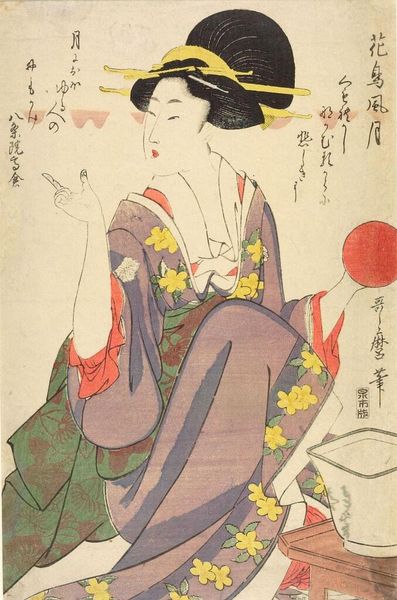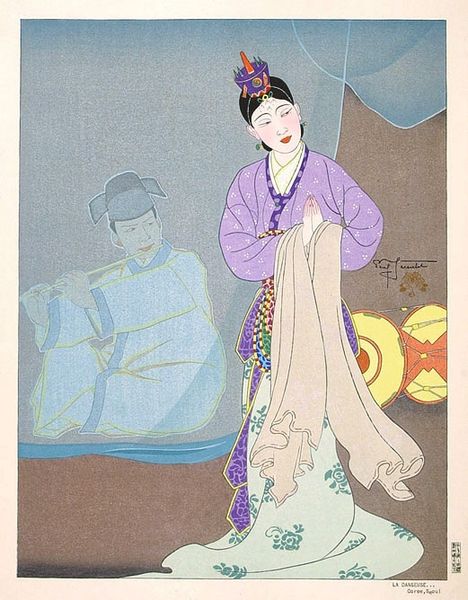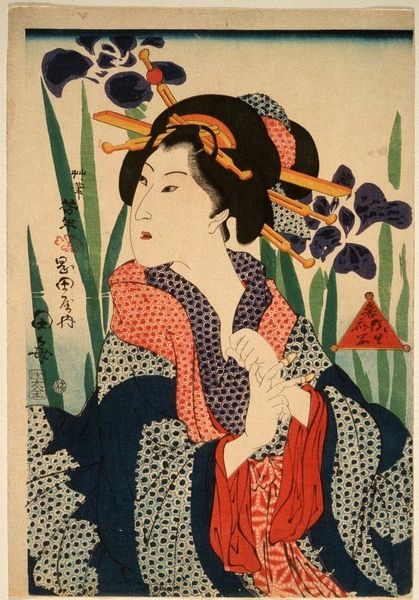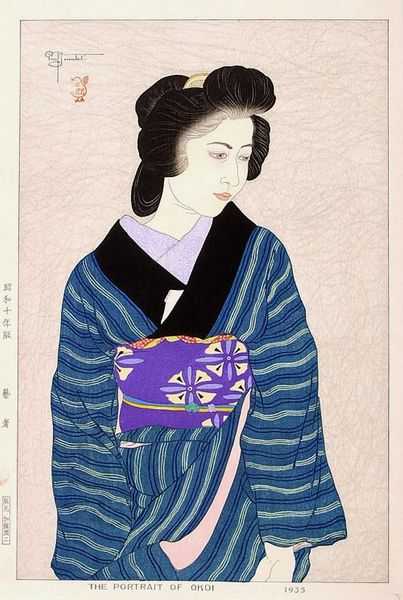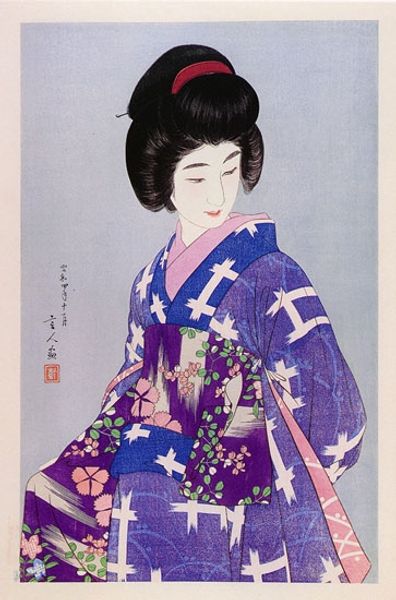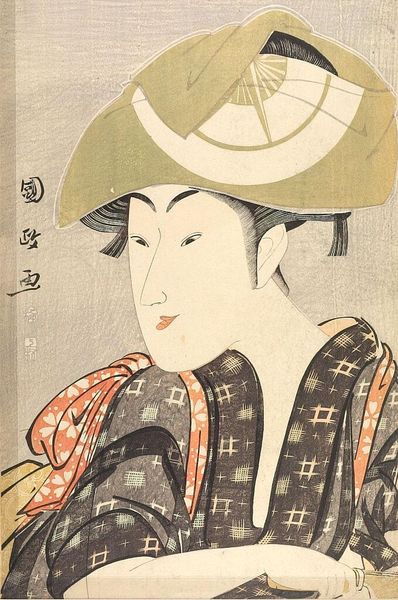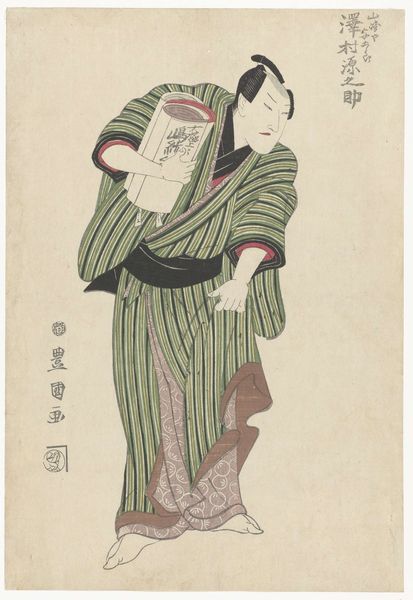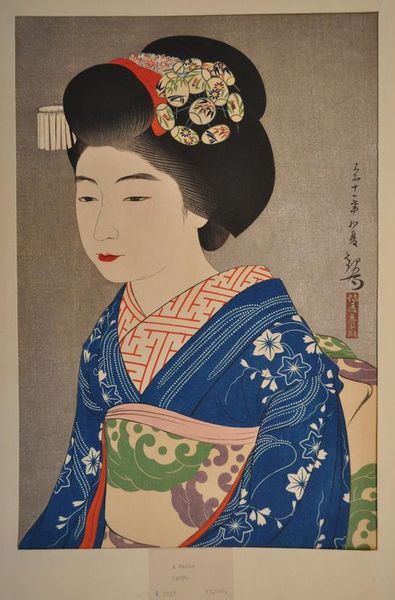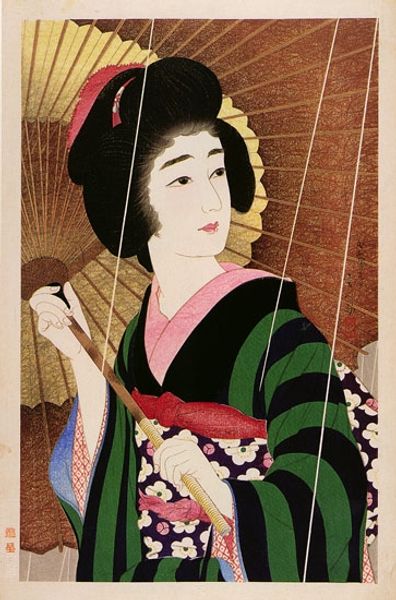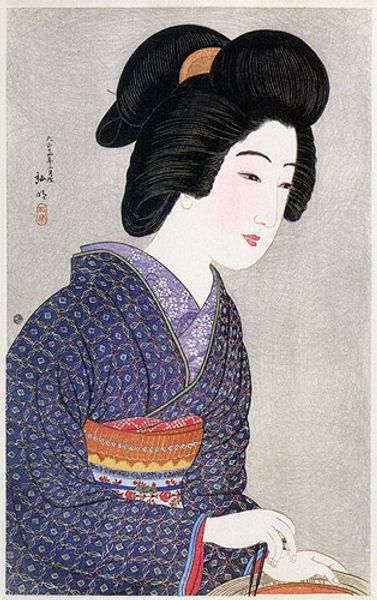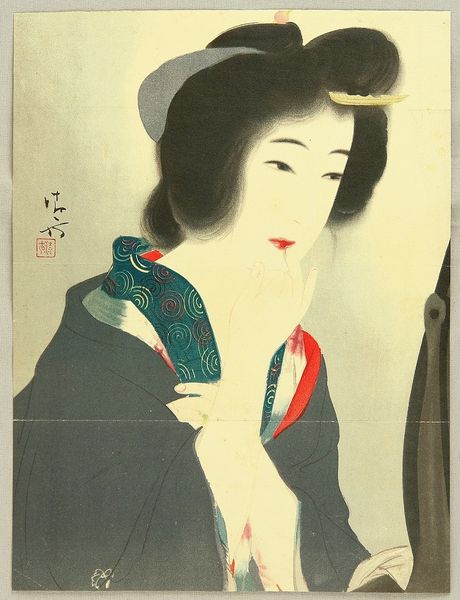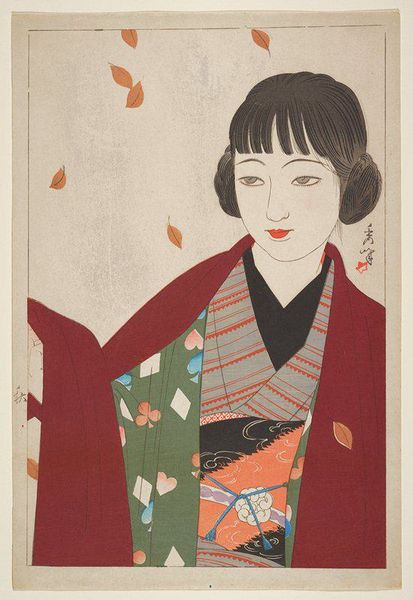
Copyright: Public domain Japan
Editor: This is "Le Bol De Lait Aino. Hokkaido, Japon" a print by Paul Jacoulet, from 1958. I’m really drawn to the colours in this image and the stylized shapes – they feel both modern and traditional somehow. What do you see in this piece? Curator: The layering of visual codes is fascinating here, isn't it? Jacoulet, a Frenchman, depicts an Ainu woman from Hokkaido, Japan, employing the Ukiyo-e style traditionally reserved for Japanese subjects. Consider the orange of her headdress. Does that particular hue resonate with other cultural significances to you? Editor: I hadn’t thought about the cross-cultural influences so directly. The orange doesn’t immediately strike me, but the combination with the indigo reminds me of folk art, perhaps? Curator: Indeed. Indigo is a traditional Japanese dye, and in Ainu culture, designs often featured spirals. Observe how those patterns interact with the stylized kimono shape. The orange amplifies this design, suggesting warmth and perhaps alluding to vitality associated with milk. Think of the symbolic power attributed to nourishment across cultures. Does it also suggest a connection to the earth? Editor: That’s interesting. The colour was perhaps chosen to indicate a link to a particular type of local food culture and tradition, a visual marker. I’m curious to know if Ainu audiences would read the imagery the same way. Curator: A crucial question. By looking at such works, we delve into cross-cultural interactions, observing how an image can both represent and potentially reshape cultural memories. What do you make of the rather pale colour of her complexion? Editor: I hadn't picked up on the fact the complexion also signals some potential Western influences. This helps give some insight into how such complex dynamics could evolve. Thanks for pointing out the layers of visual signs and symbols in this portrait!
Comments
No comments
Be the first to comment and join the conversation on the ultimate creative platform.
